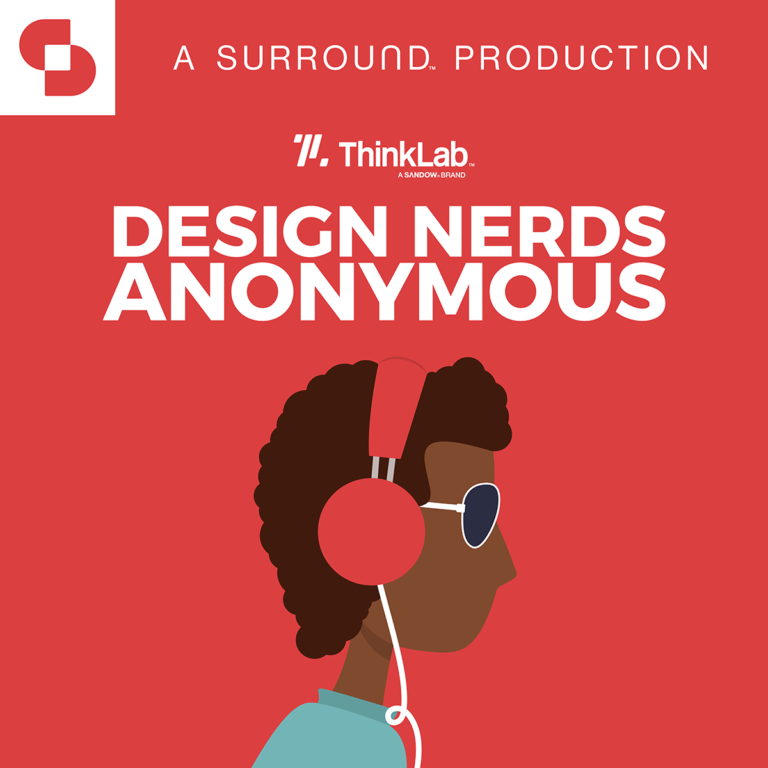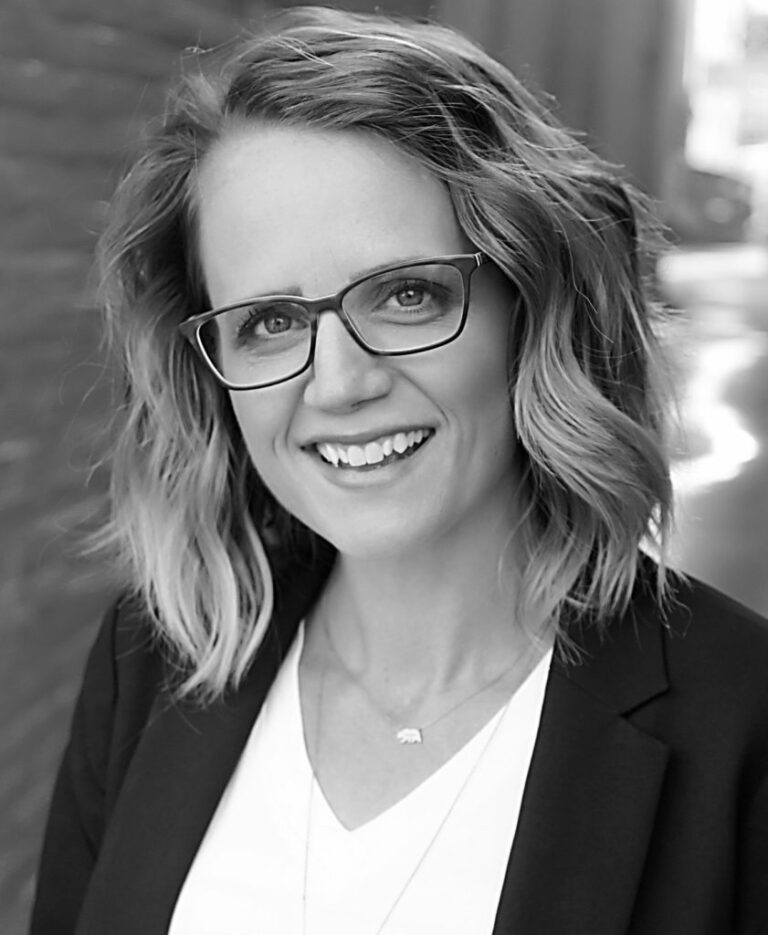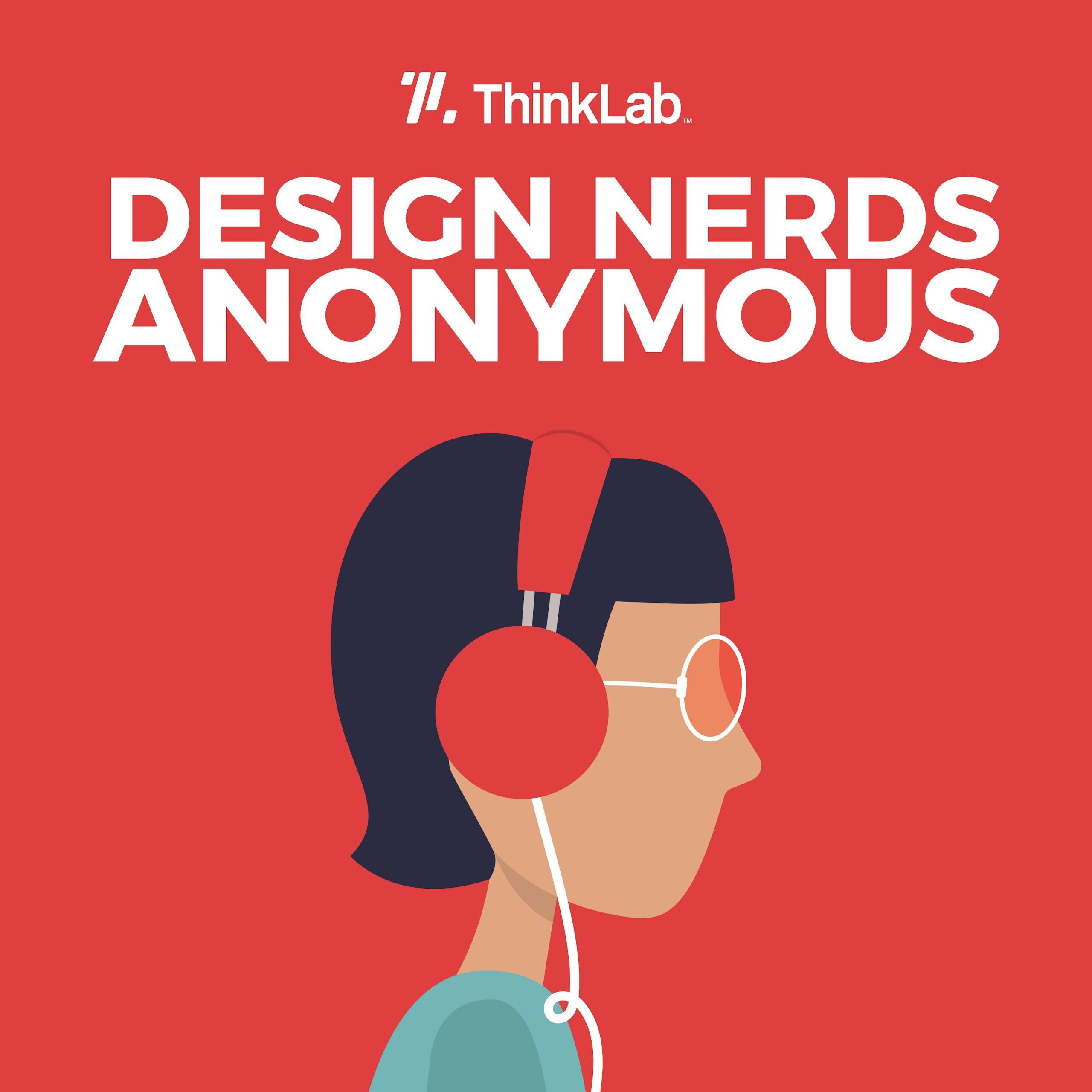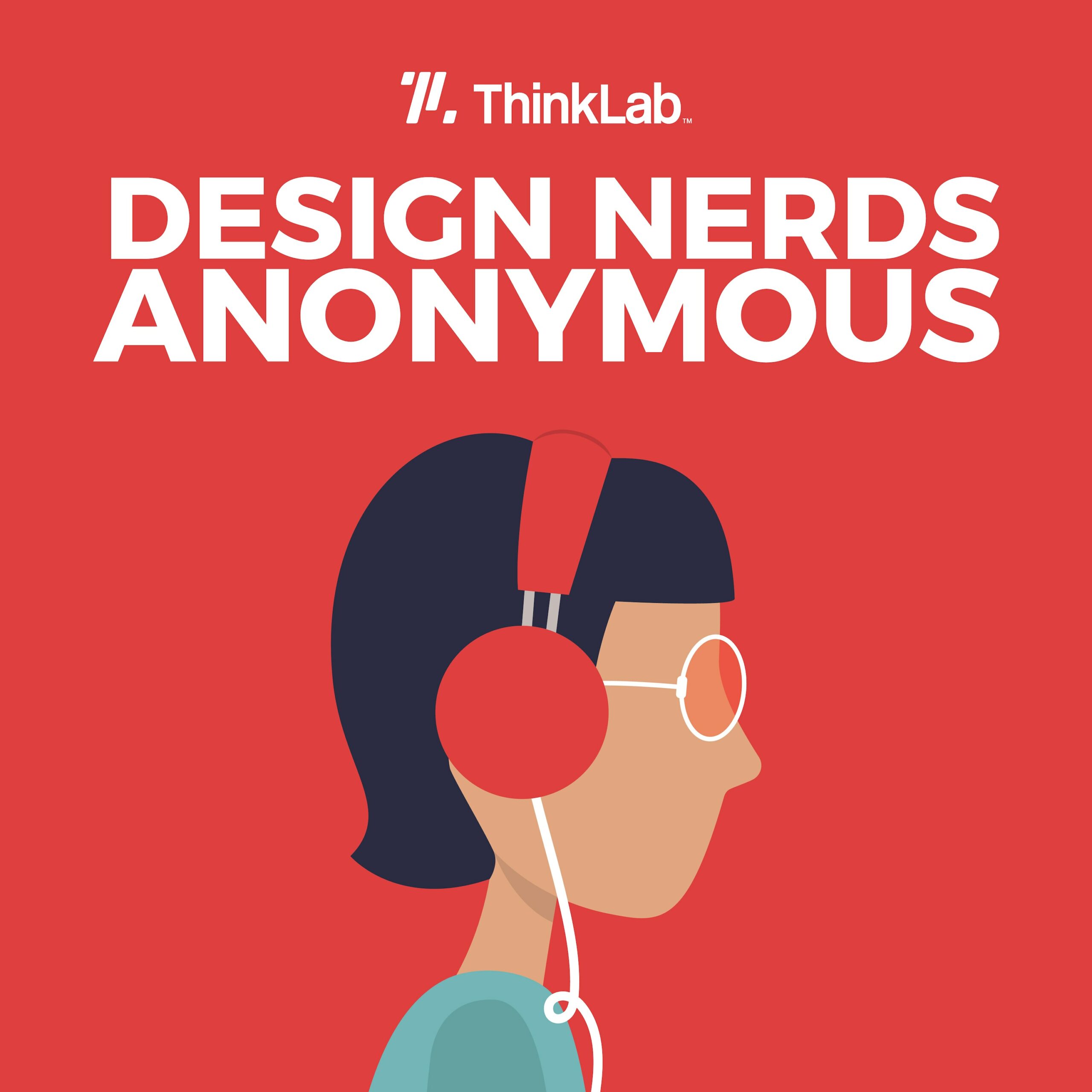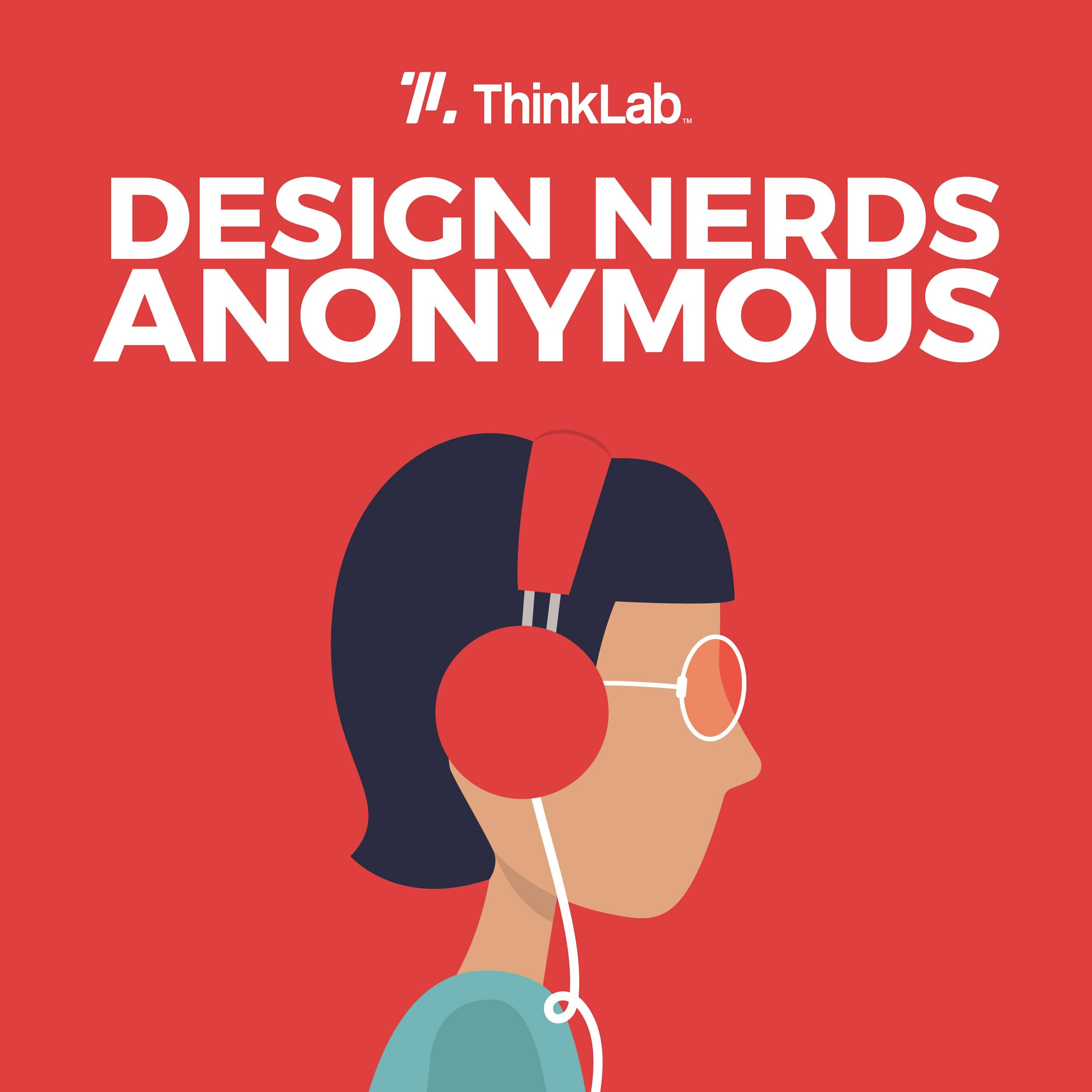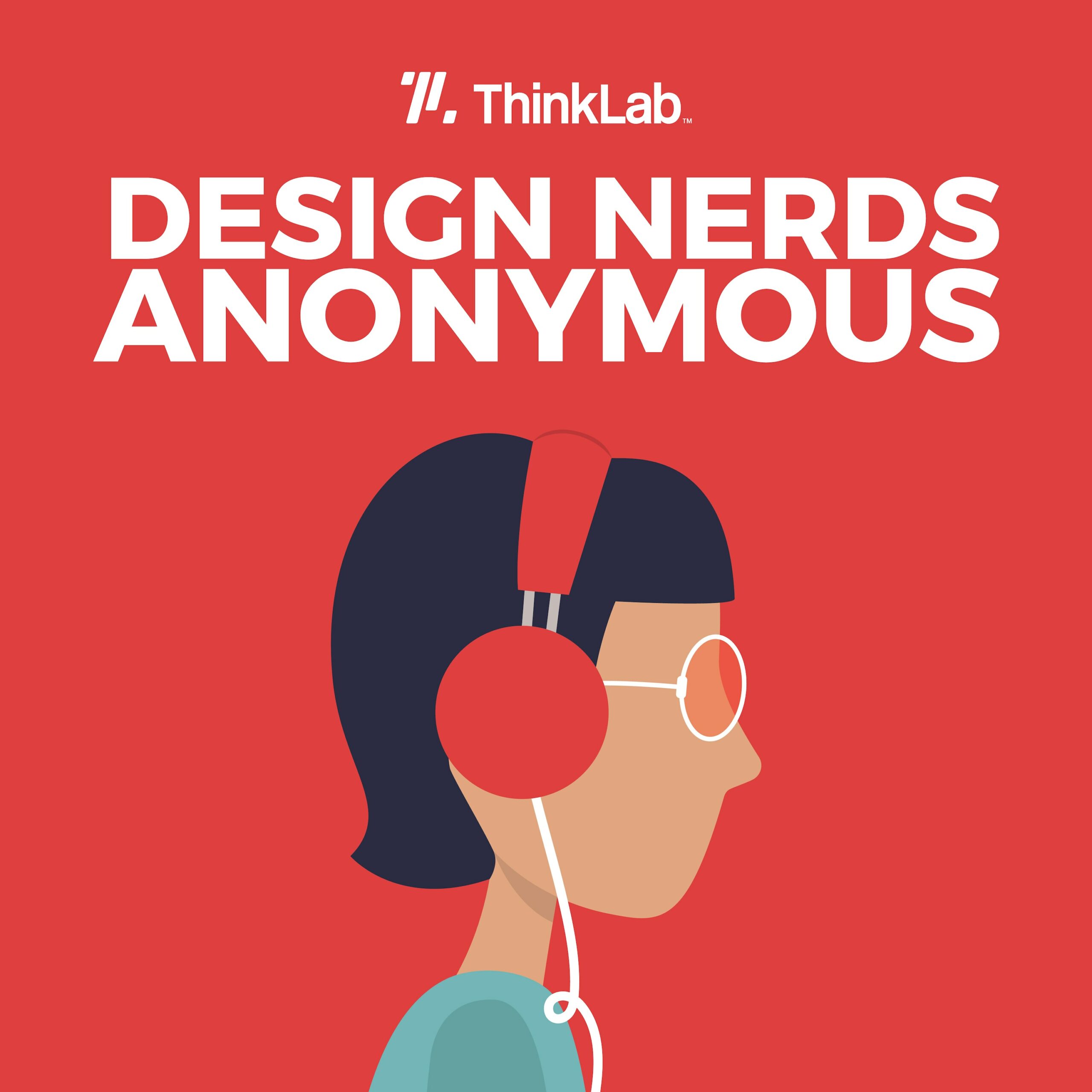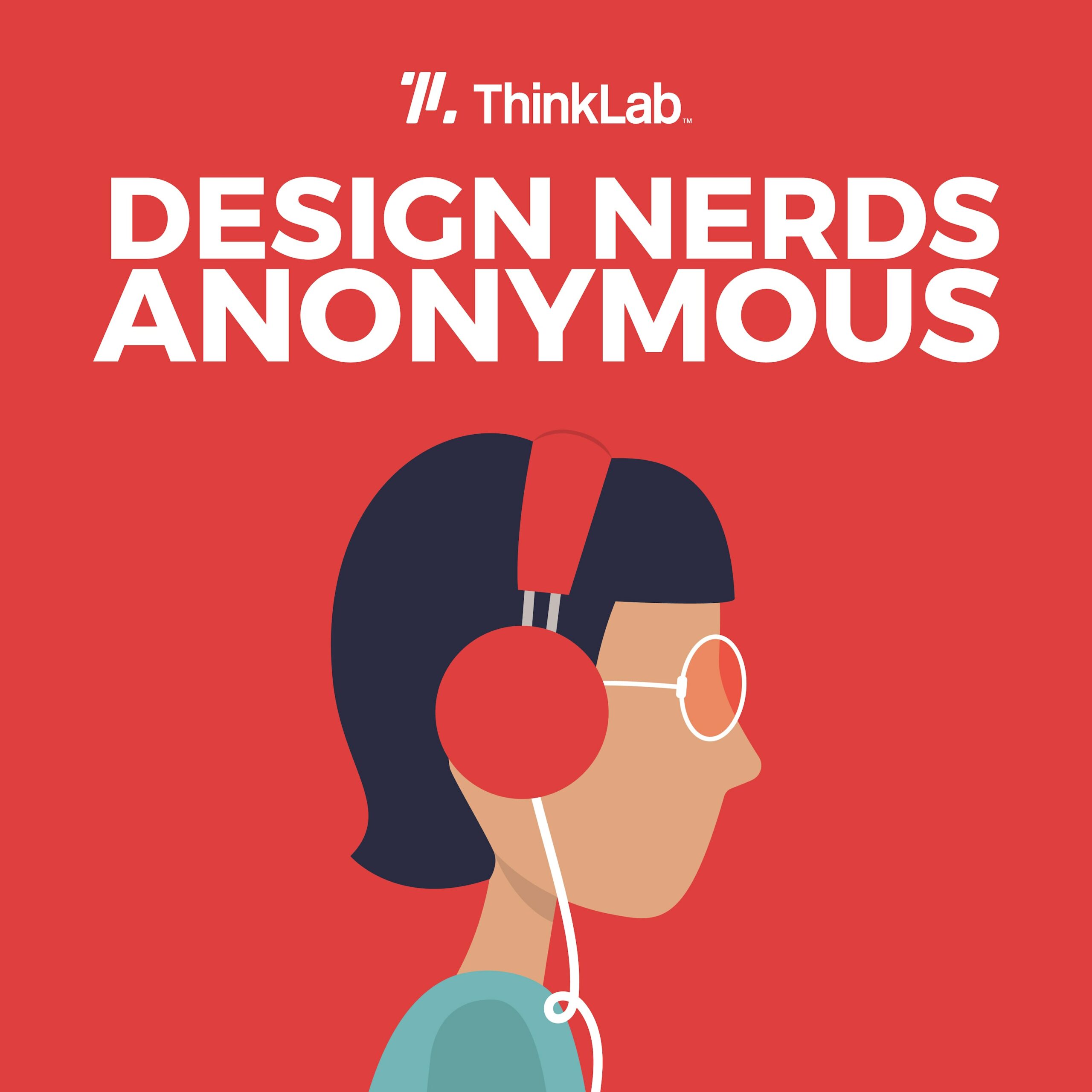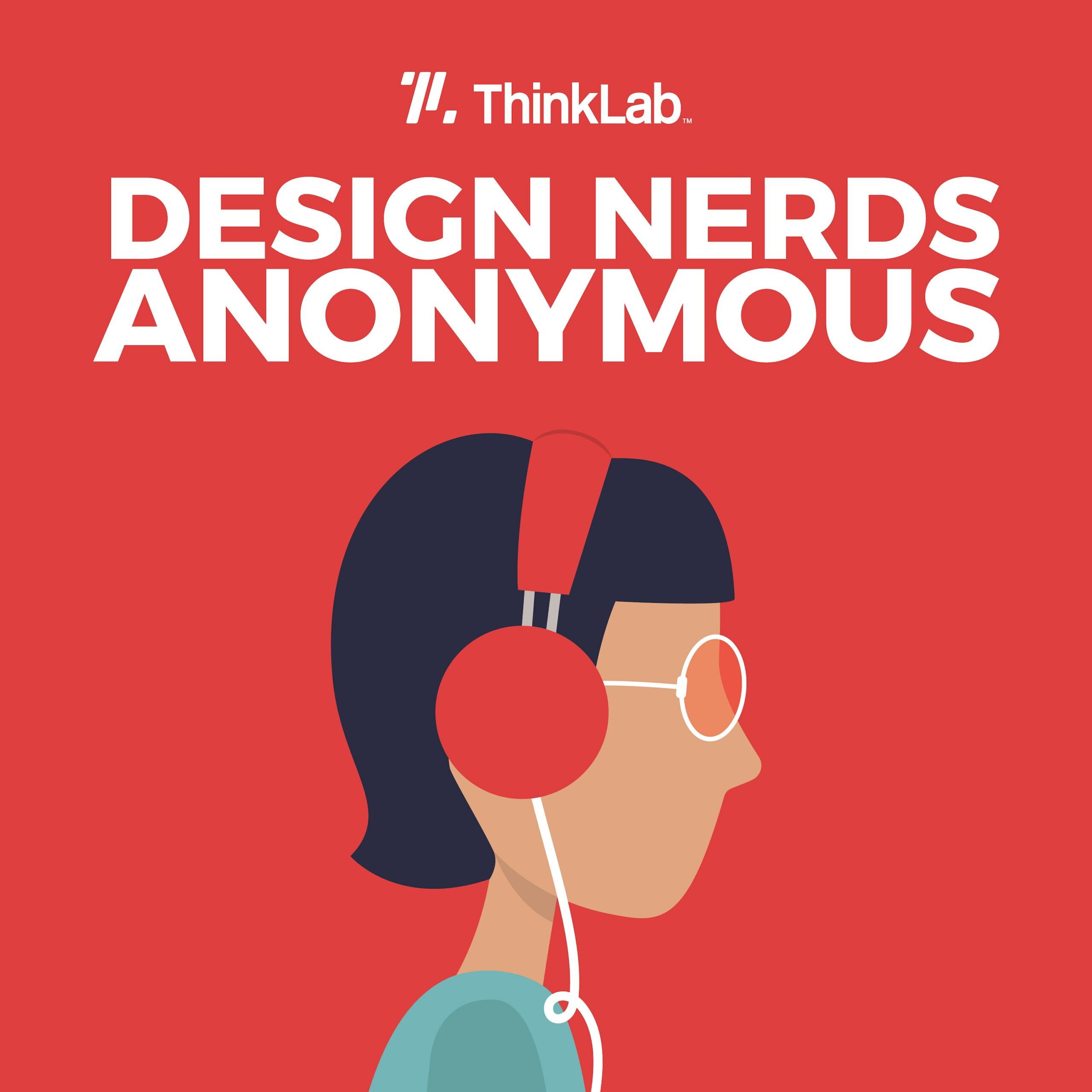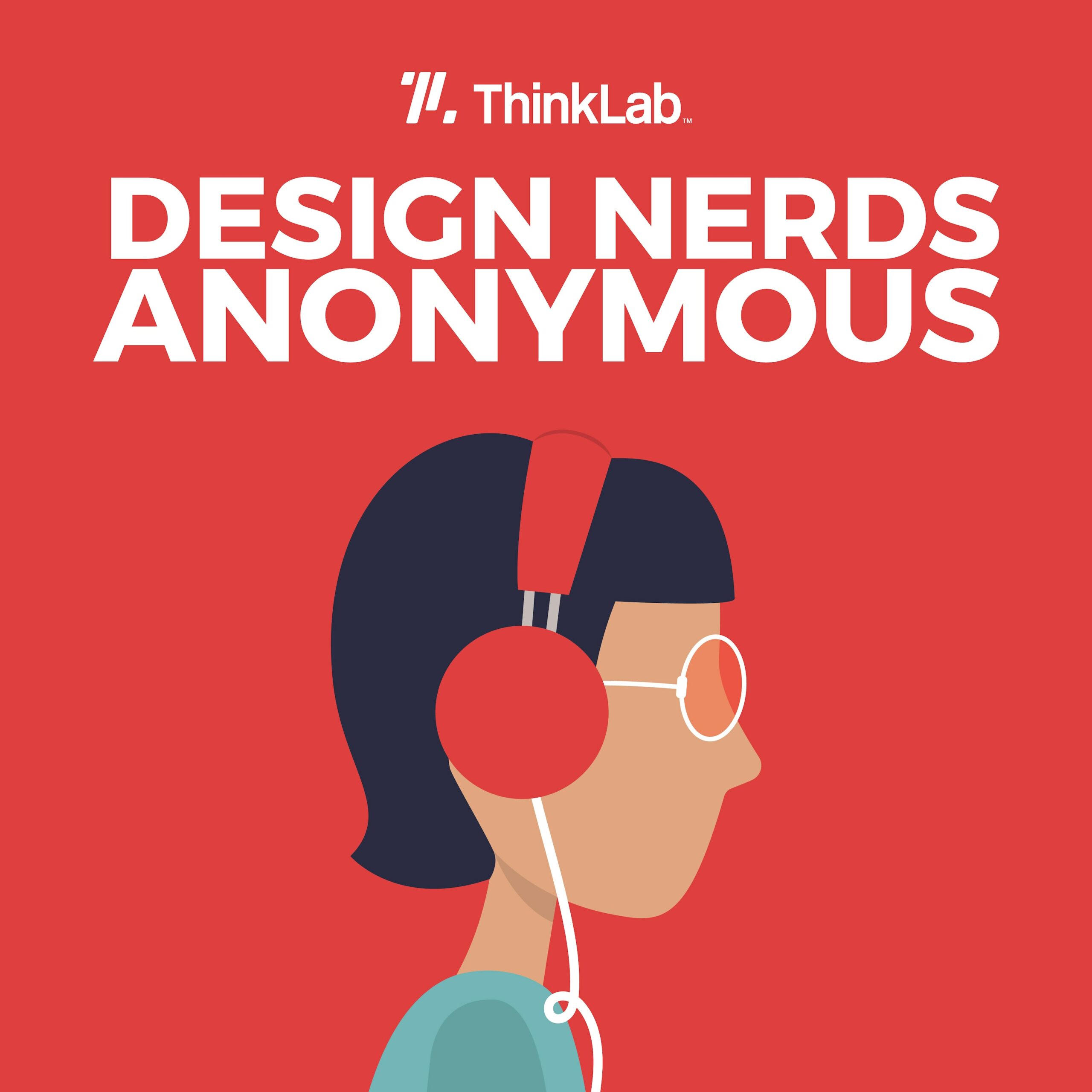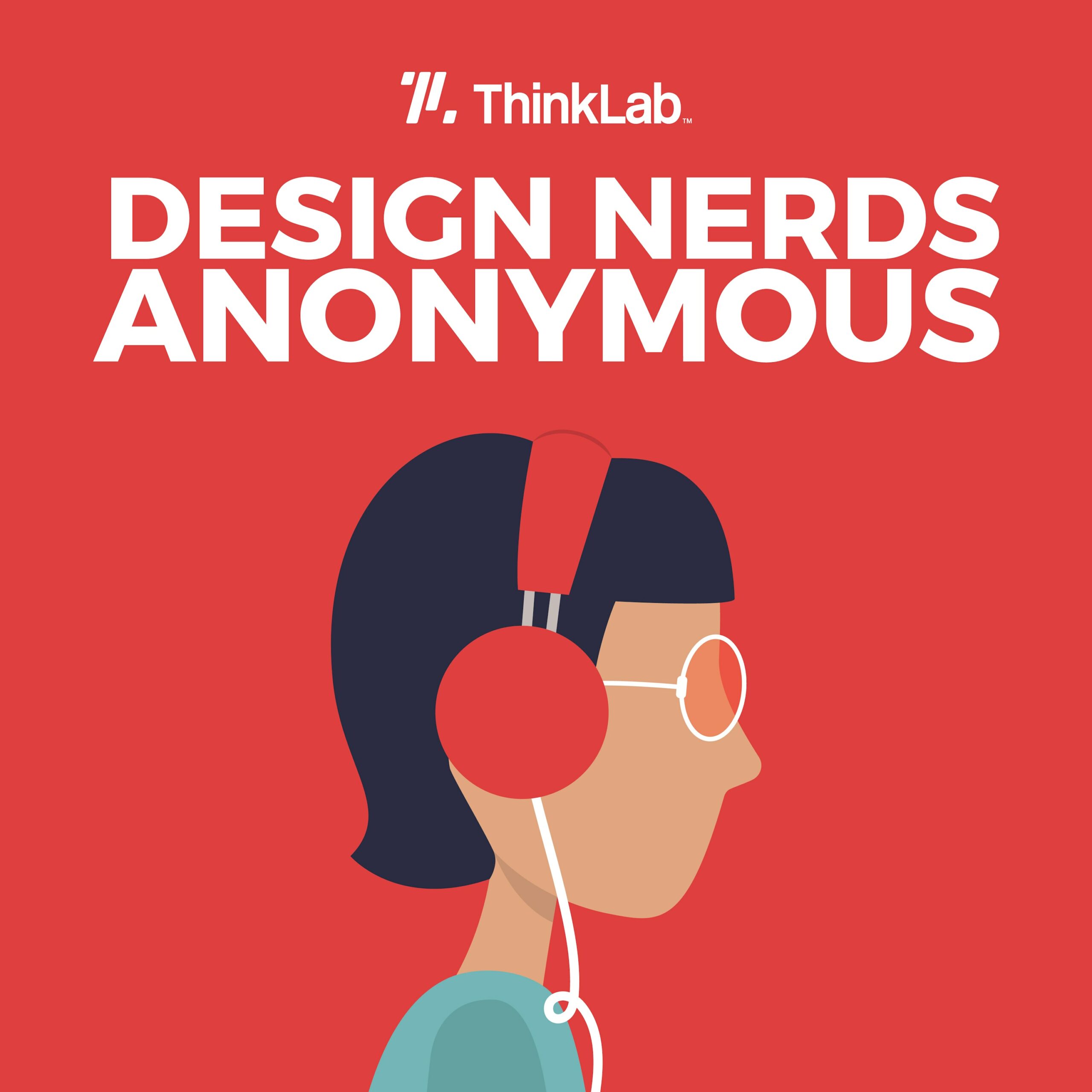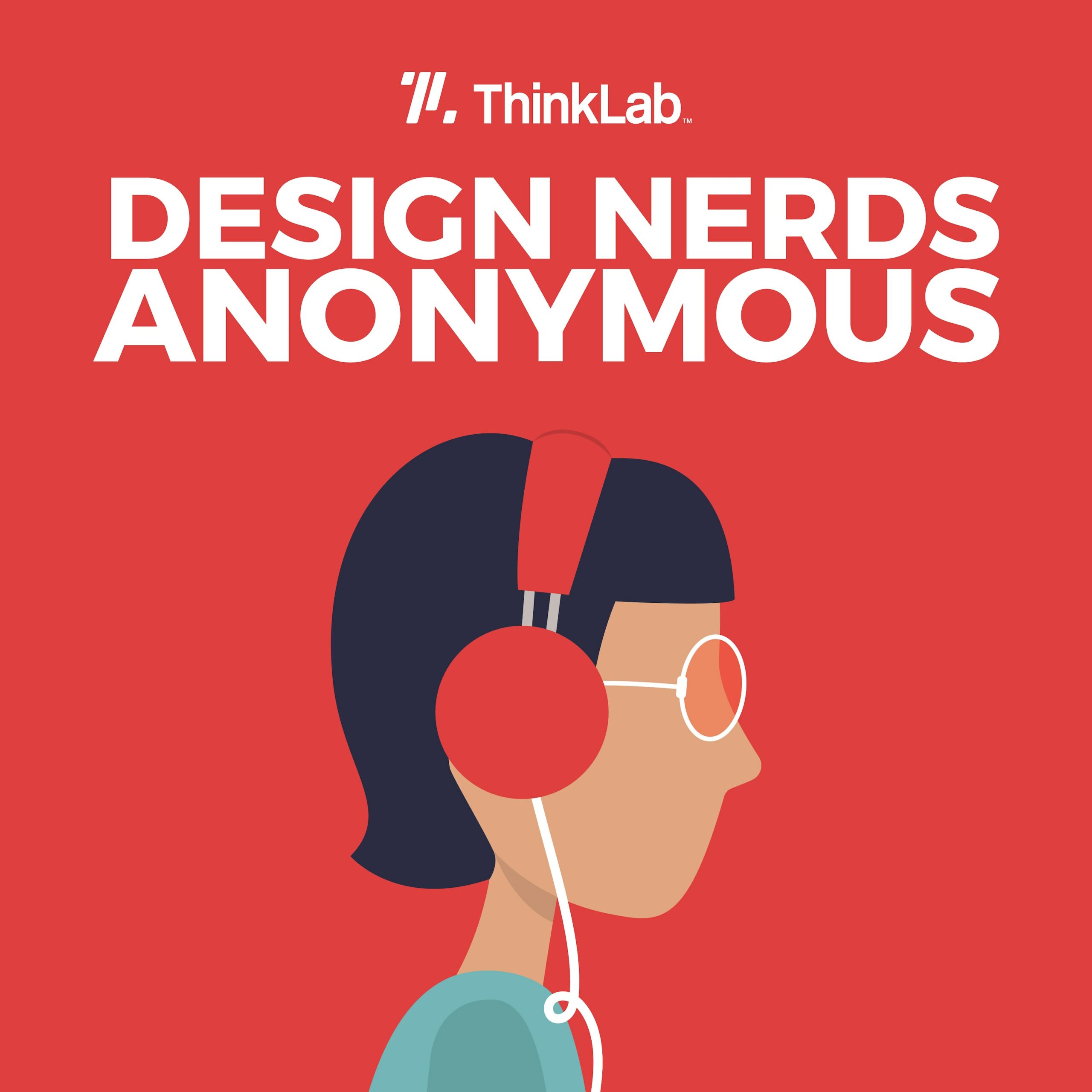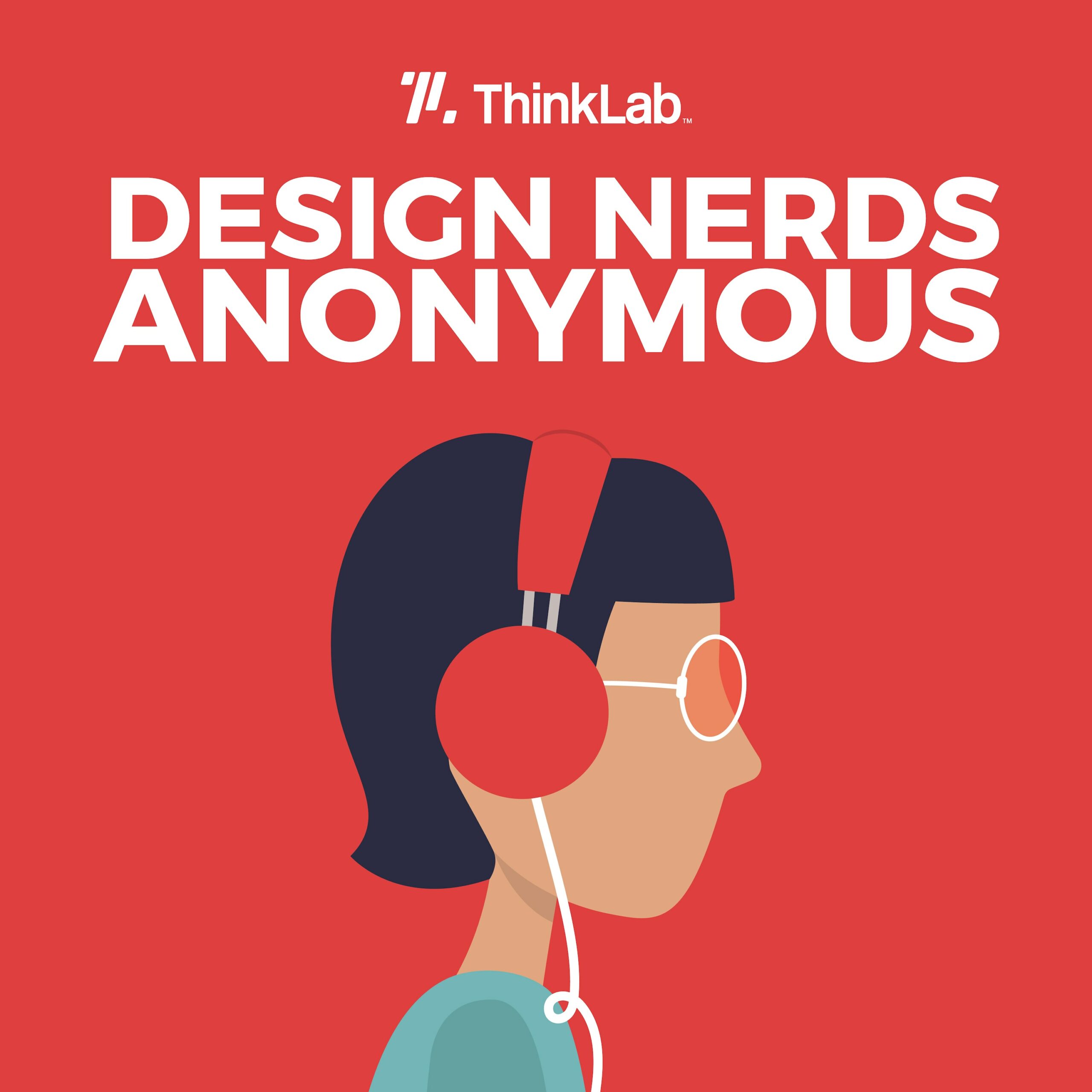We’re at a critical point in the evolution of showrooms in the design industry. New digital dimensions are expanding what a showroom can do and how it can engage with architects, designers, and end users in a radically altered experience. In this episode, ThinkLab explores the possibilities of all this upheaval and asks the experts – what steps should we take now?
First, Kelly Bacon, global practice lead of Workplace Advisory at AECOM, discusses the physical/digital convergence of the showroom and envisions one possible scenario for how a furniture rep and a designer might interact. Darren Ross, our second guest, runs the Magic Castle Hotel in Los Angeles. He tells us about the hotel’s celebrated “Popsicle hotline,” an example of Darren’s customer-focused mindset and commitment to creating memorable moments — both useful attributes when building a showroom experience. Our final guests are Bitreel CEO Cosmo Kramer and COO Renu Chipalkatti, who discuss what the metaverse is and what it means for manufacturers and designers: Will there continue to be physical spaces? What will their role be?
In this episode:
[8:48] Kelly urges designers to consider functionality, especially when creating hybrid workplaces.
[19:12] Darren talks about the power of connection as the real secret to his hotel’s appeal.
[23:38] “It was pretty stunning to see a gaming application that could be life-changing in terms of shopping.”
[26:37] Cosmo advises manufacturers on their next steps to prepare for the metaverse.
[30:43] Renu discusses how showrooms will transition within the next five years.
Take action:
Our latest ThinkLab playbook includes 20 easy-to-implement tactics to help you find success with an integrated phygital showroom experience –and to say thanks for listening, we’re giving our podcast listeners the first chapter featuring all 20 ideas for elevating your showroom experience absolutely free. Visit https://info.thinklab.design/playbooks to download your complimentary chapter
Connect with our interviewees on LinkedIn:
Special thanks to our episode sponsors Mannington Commercial, Keilhauer, theMART, and NeoCon, thoughtfully selected because they both represent companies that are bringing new techniques and thinking from outside the design industry for positive application.
Finally, thanks to Hannah Viti, our audio producer, and Blue Dot Sessions for providing the music for this episode.
Episode 2: The Future of the B2B Showroom Experience
Amanda: [00:00:00] Are you a designer trying to help your clients understand product when they can’t always touch and feel it? Or maybe you’re a product provider trying to figure out how much to invest in product for your limited showroom space. Or maybe you work in the commercial real estate realm and have a vested interest in B2B showrooms.
In any case, you are listening to this episode because you’re curious about this question: What is the future of the showroom within the design industry? Us, too. If a designer is working from home one to three days per week, will they attend physical showrooms with the same frequency or for the same reasons?
ThinkLab spent the past six months exploring the future of product specification. And we used our findings to develop season three of this podcast. In each episode, you’ll hear us tackle one key challenge from our research. First up: The future of the showroom. [00:01:00] Fair warning: Our goal is to use inspiration from recent disruptions to challenge us to create a better future that we all want to be a part of.
So with that in mind, let’s start with a bit of advice from two of our guests on this episode.
Cosmo: Keep an open mind. Even if you’re starting small, there’s things here that are actually going to improve your business.
Renu: I would also challenge the A&D community to reimagine the future with us.
Amanda: Meet Cosmo Kramer — and yes, that is his real name, but more on that later — and Renu Chipalkatti, CEO and COO respectively of Bitreel, a technology company that is focused on the A&D world and helping the design industry tiptoe into the metaverse. And [00:02:00] if this topic interests you, we’ve got lots coming up on the metaverse, both in Metropolis’ editorial, and on ThinkLab’s Clubhouse.
This episode consists of three chapters. Each provides a unique lens to inspire the future of the showroom, from how manufacturers should create them to how architects and designers should leverage them.
In chapter one, you’ll hear from Kelly Bacon, global practice lead of Workplace Advisory at AECOM. Coming from a foundation in the product side and showroom side of the industry, but now with decades of experience on the design side, she’ll help set a future vision for what designers may expect from their future showroom experiences.
In chapter two, we’ll hear inspiration from outside of the industry with Darren Ross, TEDx speaker most known for his role in creating unexpected experiences that surprise and delight for one of the top-rated hotels in LA. [00:03:00] And finally, in chapter three, we’ll hear from Cosmo and Renu again, with more possibilities on how we can wade — or dive — into the metaverse.
Welcome to season three of Design Nerds Anonymous, the podcast that sparks curiosity at the intersection of business and design. I’m your host, Amanda Schneider, founder and president at ThinkLab, the research division of SANDOW Design Group and sister company to media brands you know and love, like Interior Design, Metropolis, Luxe, and more. At ThinkLab, our passion is sharing inspiration for your business, fuel for your design process, and connection with people and ideas for positive disruption.
So thanks for listening. We’re glad you’re here. Let’s dive into chapter one. Our first interviewee, and assistant to setting up this challenge, is Kelly Bacon from Interior Design Giants of Design’s number four firm, AECOM. Meet Kelly.
Kelly: I’m Kelly [00:04:00] Bacon. And I lead a group called People & Places Advisory globally within AECOM. We are a large infrastructure, design, and construction firm. And our group is part of the Buildings & Places Practice, and within Buildings & Places is architecture, interiors, cost consulting, engineering, etc. Essentially, it’s all the ground-up design disciplines. People & Places Advisory is the workplace strategy and the place strategy consultancy within Buildings & Places.
Amanda: What interested us about Kelly, as we explore the future of the showroom, is her unique perspective, both in her current role with an A&D firm, but also her background on the product side of the industry.
Kelly: I’ve been with AECOM seven years and have been practicing in real estate and design for close to 23 years. I did start my career on the manufacturer side. I was placed at a company called Teknion, and I started as a showroom manager. [00:05:00] And then from there, I went to HNI and was responsible for the growth into the commercial sector.
And at that time, the HON Company did not have commercial showrooms other than New York and their headquarters. So it was very fortunate to be the person to help with that expansion strategy, assess the location strategy, and then oversee the build-outs in the major metropolitan markets, such as New York, D.C., San Francisco, Chicago, and a few others.
So for about six years, I was overseeing the process, but you have to really dig deep and understand the purpose of showrooms in order to design and make the proper selections around showrooms. So I worked very closely with the sales staff, as well as the A&D community, because the purpose of showrooms is to educate the A&D community, as well as end users, and help them make the right selections for their projects.
Amanda: I want to make [00:06:00] sure we reiterate Kelly’s original purpose statement for showrooms.
Kelly: The way that I described the purpose of showrooms was: to educate the A&D community, as well as the end users.
Amanda: Although you’ll hear her describe opportunity for evolution in how we use showrooms, you won’t hear her waiver from its core purpose.
So, let’s hear about where she sees opportunity for evolution.
Kelly: In terms of how I see it changing and using the comparison to the auto industry, you’ve got tools like Carvana and other models that are coming out where you’re buying direct from the website. Now, do I think that’s going to happen in our industry?
Probably not. Because again, there’s a lot of complexity. There’s a lot of different options in terms of the materiality. Furniture is a very complex topic, but it also represents roughly, you know, 80 percent of the design budget. So it’s a really important purchase. The furniture needs to be in the context of the rest of the space, all the other materials, etc., etc.
Going back [00:07:00] to the idea of the physical/digital convergence, one of the challenges we’ve always had with showrooms is that there’s, there’s finite or limited space. All the manufacturers are challenged with showing as much diversity in their product as possible in a very limited space. Those choices that manufacturers make in terms of, we’re going to show this configuration for this product and that’s it, but leveraging the digital tools and having a variety of perhaps typicals and different pricing options and different configurations right there next to the physical configuration, I think can only help serve that educational process that much more.
As a design community, we have both an awareness, as well as we’re able to envision different configurations. But we know that our clients may not be as accustomed to reading floor plans, you know, looking at 2Ds, etc. So I still see the showroom being that critical educational tool, helping [00:08:00] designers, helping end users understand how it works, understand all the different options.
Amanda: What I love about Kelly’s point of view is that again, she’s saying that the purpose of the showroom — education — hasn’t changed, but there is opportunity to enhance the limitations of physical space with new digital experiences that enable the design community and our clients to make better decisions.
In recent ThinkLab focus groups, we’ve heard a push from showroom tour to workshop. And Kelly encourages us to think even bigger about creating experiences within showrooms and what our clients are looking for today. Here’s a little hint: It’s not just a beauty contest.
Kelly: To my industry colleagues — we have to look at elevating the discussion to not just the aesthetic of the products, but all of these new things that we’re looking at in terms of neurodiversity, cognitive ergonomics, you know, [00:09:00] bridging between focus and collaboration and those being mutually exclusive activities. We have to use our showrooms as a tool to help our clients understand a broader context. This is where we segue into the hybrid future.
That’s what everybody’s trying to figure out. That’s what every single agency, every organization, public sector, private sector, etc., is all looking to redefine the purpose of their office. So if the intake was less about “I need to see a panel system,” and it’s more of, perhaps, behavior or work modes — meaning, I want to see all the figurations that are conducive to individualized focus work — versus, we’re going into a purpose-driven approach, where the purpose of our office is literally only to house meetings and collaborate, so it’s less focused on color and aesthetic. And more of, OK, these are the products that, you know, we think are the most relevant. I think there’s a lot of [00:10:00] opportunity there to move towards the end user needs and less on the aesthetic early on.
We really have to elevate the discussion in terms of functionality and/or purpose. And I’m not entirely sure as an industry we’re necessarily great at that. But when you think of all the uncertainty, all the ambiguity, you know, every organization trying to figure this out — what hybrid is, what does it look like — there’s a lot of fear in terms of who’s still looking at traditional lease terms. Ten years — we don’t know what’s going to happen next year, never mind what’s going to happen in the next decade.
Amanda: So as we think about holding true to the purpose of education, but thinking more broadly, more conceptually, we also pushed Kelly to think about how digital tools can help us do just that.
Kelly: Everybody’s talking about the metaverse. There’s different degrees of understanding of what the metaverse is, and we’ve been doing a regular series with our studio talking about it: What does it mean to us? What does it mean for our industry? How can we leverage [00:11:00] it?
Amanda: Let’s hear one example of those internal questions applied to the showroom experience as a desired future state.
Kelly: The idea of can you and I come together in a virtual showroom, and if you were the furniture rep, you know, be kind of curating or navigating that experience. We have a brief conversation. This is what I’m looking for, and this is what my organization is doing. And through that conversation, you are able to bring up these virtual environments, adjust the context with the aesthetic of the product to create these various configurations.
If it were in the metaverse, if it were digitally enabled after the visit, after you show me everything virtually that I needed to know, where I can go back to you, the manufacturer, the showroom and have that feed into the digital environment and evolve it. And then also, perhaps because I’ve customized the experience, the idea that it can be captured into a video that I can then share with my [00:12:00] clients to have them see exactly what I experienced while I was physically there again, educates them, helps them make informed decisions. The idea of just making it easier, making it more accessible, you know, making the pricing model more transparent will really, I think, help everybody in the long run.
That’s just one example of a scenario, which I think would be completely welcomed by everybody in our industry.
Amanda: But Kelly challenges not only the manufacturers to think about creating that experience, but how the A&D community must engage to get that personalized, customized experience.
Kelly: It shouldn’t just be a one-way. There should be a feedback loop. And so as manufacturers make future showroom decisions, every manufacturer is looking to kind of keep their showroom as fresh as possible, rotate out new products. But the idea of being able to provide more information prior to going in not only makes that particular purchasing experience, or [00:13:00] that visit, more efficient and effective for both, but it also starts to equip the manufacturer with continuous information.
You know, we see geographic differences. What sells in Chicago may not sell in LA. Data is not knowledge, but data contributes to knowledge. Collecting data on a continuous basis allows manufacturers, allows dealers, allows everybody, to make more informed decisions.
Amanda: But never fear. Kelly says clearly, even with new digitized experiences, showrooms will still be desired.
Kelly: The whole idea of, you know, being able to see it live, kick the tires, etc. — I don’t believe that’s ever going to go away. Ultimately, before an order is placed, he or she or they may want to physically see it in person. And so then that’s when, you know — whether we go to the same showroom, or I go to the one in Phoenix and the one in Chicago — but we’re having the same consistent experience.
Amanda: So as we close out chapter one, Kelly leaves us all with this [00:14:00] challenge, and I find it applicable within the showroom and beyond.
Kelly: When I think about showrooms, I hope that we’re entering an era of piloting, experimentation, and testing and tinkering because things are going to continue to evolve.
Amanda: Speaking of things evolving, to kick off chapter two, I’m thrilled to introduce Darren.
Darren: My name is Darren Ross. I own a company called Service Freak Hospitality, LLC, and that company leases and operates the Magic Castle Hotel, which is in Hollywood, California.
Amanda: So what does a hotel operator have to do with the things that we care about at ThinkLab? If you followed our passions, you’ve likely heard us say that the biggest future disruptions in our industry will come from process innovation, not product innovation. So as we think of the Magic Castle [00:15:00] Hotel, you’ll see it’s not about creating a better product, space, or design. It’s about weaving in what he calls “Popsicle moments.”
Darren: Popsicle moments — how any business can, can do a lot with a little, which is what our story is.
Amanda: His TEDx talk includes a line something like this: “When I got to the Magic Castle, the hotel wasn’t operating to its potential. It was a converted apartment building with exterior corridors built in the late ’50s. Didn’t have an elevator, no room service or restaurant, and no great view to sell.”
But now, 16 years later . . . they’re a converted apartment building with exterior corridors, no elevators, no room service, no restaurant or great views to sell. Yet they’re one of the leading hotels in LA, by nearly every measure. They’re typically in the top five on Tripadvisor. They’re [00:16:00] mentioned in numerous articles and have won multiple awards. Dan Heath, best-selling author, even mentions them in his book The Power of Moments.
So, as we connect that to showrooms, a designer who was bidding on a showroom project recently asked me, “Of all the showrooms, who does it best?” My response was when it comes to a visual design competition, the list is long. But when it comes to experience, especially as we tie in what Darren’s talking about, opportunity abounds.
Let’s hear more about how Darren did it.
Darren: Perhaps our most famous innovation here is our Popsicle hotline, which is this really fun, small, colorful sign in our pool area, and below it is a red phone, a true hotline. There are no dials or buttons on this phone, and all you do is lift up the phone. [00:17:00] And someone here answers, “Popsicle hotline,” and then the child or adult will ask for a Popsicle. We say, “Absolutely.” And then a minute or two later, our staff member comes out wearing white gloves with a silver tray — the Popsicles — that we bring to the pool. And of course, no charge for it.
And we pass out Popsicles, and we make it fun. We say, you know, “Who called the Popsicle hotline?” and we go out there. You know, parents are taking pictures, they’re taking movies of their, of their kid getting a Popsicle, and it’s taken on a life of its own. It’s, it’s incredible. It’s written about all over the place. It’s talked about in marketing classes all over the world. It’s in books, it’s on podcasts, it’s all over.
Amanda: So let’s connect this to our industry. I’d suggest as designers, we pride ourselves on empathy. And if we put ourselves in clients’ shoes, especially on one of the marathon days of showroom tours, it’s overwhelming at best.
ThinkLab was [00:18:00] hired a few years ago by a furniture manufacturer. They were competing for an incredibly large project, and they had the not-coveted 2:00 p.m. slot, being fifth out of five tours that started at 9:00 a.m. that morning. So recognizing that the entry to many high-end showrooms is one of the most awkward parts — I mean, do we hug, do we handshake, and why are there so many men in suits? — we created stations. If you were feeling drained, you could go to station one, and you’d get a cool lemon-lavender cloth and a cup of tea. If you were feeling tired, you could stop at station two for a Starbucks and a jolt of caffeine. And if you were just downright overwhelmed and fed up with this whole thing, you could grab a Red Bull and a gift certificate to axe throwing from station three — for later use, of course.
Now we still hear from this client and the design team that that entry was one of the most memorable showroom tours of their career. So as we enter the era increasingly focused on [00:19:00] inclusivity and encouraging belonging, I challenge you to listen to his motto. And consider how the design industry itself could be more inclusive and welcoming when it comes to showrooms.
Darren: Our motto is “Listen carefully, respond creatively.” Something we’ve just learned over the years: When they get to our hotel, people don’t care so much about fancy. They care about connection. They care about someone being genuine and real. And it’s been a really good lesson for us over the years.
So when I started, I wanted fancy this, fancy that. I wanted every amenity. I realized people don’t care. Of course, some do, right? Some do, but most really don’t. They’re going to remember that connection. Like, you don’t need an MBA for that, you know, so it may not be measurable. It’s measurable for us in reviews of the hotel. It’s [00:20:00] measurable for us in impact. I know it works. I know it works. And the hotel does well. We’re successful by almost all measures in our industry. We’re very, very successful.
Amanda: So as we close out chapter two, Darren challenges us with this.
Darren: I would say be a customer service company first that functions at whatever it is you do. For us, we function in a highly saturated market as a hotel in Hollywood, but I don’t consider my company to be a hotel company.
We’re a customer service company functioning as a hotel. And I think that that gives us a very specific mindset.
Amanda: So with our newfound, inclusive customer service mindset, let’s dive into chapter three. So to kick off this chapter, I want to merge Kelly’s ideas around the future of blending physical and digital into our industry’s [00:21:00] needs and Darren’s ideas of creating experiences.
We’ve had decades, centuries even, of analog experiences that are woven into our everyday cultural and industry norms. This digital era, though, accelerated by the past two years, still feels new and maybe even uncomfortable. But I want to challenge that if done right, we can create can’t-miss opportunities for our clients that they never knew they needed.
And with this thought, let me reintroduce our final two guests of this episode.
Cosmo: I’m Cosmo Kramer. I’m the CEO and a co-founder of Bitreel, and prior to Bitreel, I spent around 10 years working in strategy for large companies in hospitality and retail. And I’m now very excited to be working with Renu and the rest of the team at Bitreel to help build out beautifully designed virtual showrooms for manufacturers and retailers.
Renu: I’m Renu Chipalkatti, and I’m currently the COO of Bitreel. Prior to [00:22:00] that, I was with Verizon, a long career in the innovation area, heading innovation for both consumer as well as in the, in the business side. My last project was with 5G, when we launched a beta of 5G, and we were scouting around for really immersive applications that would really change how we work, live, and conduct our businesses in a day-to-day way, both personally and professionally.
When I left Verizon, I met with Bitreel as a mentor, and that application really hit me hard in how people are going to shop in, in the future. So we got pretty intertwined, and here I am working as COO of Bitreel, because we both share the passion of how we are going to change the world in future for shopping.
Amanda: We’ve all heard the term “metaverse” recently. If you’ve read up on it, it can mean a lot of things, despite some companies trying to claim the term. So let’s have [00:23:00] Cosmo break down what the heck Bitreel is and what the metaverse has to do with showrooms.
Cosmo: Essentially, Bitreel is building a platform to allow any manufacturer or retailer on the planet to quickly and easily set up their place in this metaverse. That’s become a pretty buzzy term, but we’re going to use it because that’s what helps you understand what this really is. We essentially let them build that place in the metaverse to help them better connect with their customers, whether that be B2B or B2C. And personally, I’ve always been interested in how we can use technology to better connect people and treat physical distance.
And as Renu alluded to, that’s exactly what we’re doing.
Renu: It was pretty stunning for me when I saw the application, honestly, to see a gaming application that could be life-changing in terms of shopping. Both in terms of the quality and how we can actually bring real businesses to this application, where we can actually help them improve their [00:24:00] top-line growth — as well as their bottom line — because it’s so much easier, faster, and cheaper to develop these virtual stores than spending a million dollars to open these vast showrooms across different cities.
And here you can develop them, customize them, create local versions. People can hop between stores, and literally you can move around. But that’s the exciting part about being in this virtual world.
Cosmo: And I think that’s why — one of the reasons why — we’re all so excited about this. For example, a sales rep from a manufacturing company can meet in this virtual showroom designed specifically to reflect the manufacturer’s brand and aesthetic and customize products in real time, which includes changing the size, changing the materials, changing the color, getting that endless aisle that a lot of folks in the design community have wanted in the physical world for a long time.
It’s very hard to do, based on physical constraints and size limitations and things like that. We’re opening a lot of that possibility up in the virtual world. And we’re seeing [00:25:00] that this approach is leading to larger numbers of products added in this virtual context, and ultimately higher orders.
And in many ways, it’s almost better than physical. Because, as a lot of the folks in the A&D community know, maybe you’re flipping through swatches or something like that — you don’t have the full assortment available. Often, you may have 10 percent of what’s actually possible. In this virtual world, you have everything. You have the full product catalog at your disposal. There are things you can take from the traditional process and pull them into this virtual world that actually make them better.
Amanda: And I think it’s the idea of rehumanizing the digital experience that’s so compelling here. It’s not virtual for virtual’s sake.
Cosmo: We’re at a point in human evolution where humans will look back in a thousand years and say, that was the part where humans really became predominantly digital creatures. And yes, we’ve had computers and the internet for 50 years, and also a large portion of the population currently stare at a sheet of glass for more hours than we spend sleeping [00:26:00] every day. But I really feel that we’re on the verge of this paradigm shift in human interaction where we’ll do most of our connecting in the virtual world.
And this is going to change everything about how we live. It’ll change how we travel, just how we live day to day, how we buy things, and it’ll have a broad impact on the manufacturing and design community. In my mind, it’s going to fundamentally alter how we design and how we build products, let alone how these products are sold to end consumers.
Here’s how I describe it: It’s a path forward. At a high level, people’s time, and therefore their shopping habits, are going to shift more to online and more to focus on things in the virtual world. And much like they built 2D websites, you know, back in the early 2000s, to meet customers online as people started to use the internet, they now need a place that will allow them to deepen their connection with their customers. And the metaverse is essentially that place.
And at a low level, things that are more tangible and people can start to do now — and we recommend they do — manufacturers really need to start digitizing their product catalog, and [00:27:00] retailers need to start thinking about how they’re going to staff these virtual storefronts in the metaverse. Like in the physical world, people are going to need assistance and expert opinions and things like that.
So in our minds, this medium will just shift the conversation to the virtual world. We’re looking forward to working with more folks in the A&D community to help them get set up for that. And so, of course this paradigm shift is going to take time to manifest, but at Bitreel, we’re not sitting back and waiting for this to happen.
We don’t want to wait and see how things will play out. You know, there are tangible things that our clients are already doing, and we’re excited to work with more people to help them get up to speed in this, in this metaverse, as we’re talking about, and kind of get a foothold in this new reality.
Amanda: But to anyone feeling hesitant at this point or afraid that our collective future is going to look like something abysmal from the movie Ready Player One — where reality is so depressing, we have to escape to virtual reality — Renu says don’t be afraid because in many [00:28:00] ways, this concept is rehumanizing what today is a very sterile digital experience.
Renu: The pandemic was just a catalyst. This shift would have happened more gradually. It just acted as a catalyst and brings in the more digital side of it. If you look at what’s happening today, people are buying homes virtually. Thirty-eight percent of the home purchases in 2020 were with the millennials. They are digitally native, and they’re, you know, ushering in a paradigm shift.
And so if you’re buying homes, and you’re buying cars, without test driving, what these metaverses are trying to do with these real goods and real people are bring people as close as possible to that human experience, bringing the human experience back into the online world.
So in the metaverse, you can have people meet in the metaverse. You can have that clientele experience exactly as you have offline but in the metaverse. Just like [00:29:00] we’re conversing, you can be conversing. You can be seeing products. And I also believe in one thing: that in the past 20 years, the digital e-commerce experience has been deeply influential in what we purchase in the physical world.
Today that is going to change, especially with some of these supply chain issues. You’re going to go into the physical world, yes, to feel some of the textures, but then you go back into the digital world and, and make the purchases there. You, you do need help. You need help from the experts, the architects, the designers, you know, to help you with the color selections. And that’s what we are trying to enable. So it’s not just about digital experience — which today, frankly, is very sterile — but in the metaverse, we are trying to bring in social experiences that will help people, that will keep that engagement, that human engagement, intact.
Cosmo: I would say for anyone that’s [00:30:00] nervous about, you know, any sort of paradigm shift, I think it will of course happen gradually like everything does. And there’ll be some folks jumping headfirst in. I think for most folks, especially people that are used to doing things the traditional way, there’ll be, there’ll be avenues for them to take to help them kind of dip their toes in the water.
And so for folks that are thinking like, “Oh, this is going to be terrible. I’m not going to be able to connect with my clients, and it’s going to totally destroy my, my process” — I really don’t think that’s the case. I think, yes, if people are saying, like, completely just rip out and replace, like, that might be difficult, but I think what we’re going to try to focus on initially is just replacing certain parts of that journey and kind of deepening that connection with the sales rep and the buyer.
Renu: The next one to five years are going to be very critical, and the transition is going to come along, especially for designers and manufacturers. There are a lot of new opportunities in this area that the design team and the manufacturers will be able to look [00:31:00] at and see how they can both save time, as well as, you know, experiment at a faster level. On the web, we experiment all the time. AB testing is going on all the time, but with physical goods, it’s sometimes harder, and we’re making that possible today as well.
So, where would you start? You would start with something small. How do you sell to customers who don’t want to come in, who are going online? There’s a human, and that’s what you’re bringing people to. So you’re taking the friction away of driving somewhere, but you’re providing the same store-like experiences, such a practical and an attainable way of dipping your toe into the metaverse, but yet driving your dollar ROI and making the sale with your physical goods.
Amanda: After all this discussion of the virtual world, we pushed Renu to answer the question “Will physical spaces go away?” Her answer may surprise you.
Renu: Physical spaces are not going to [00:32:00] go away. We really believe that. They might shrink because you’ll have the entire inventory, the endless aisles online. The variations can be online. So the physical spaces will shrink. Physical spaces will also be now more for the research — which is “Come in, look, feel the texture, make sure that the colors are there.” And then you can go back. And with your design team, you can actually make the — you know, look through the entire inventory and pick the right items. Physical spaces will remain, but they will morph in what they do.
Cosmo: And I would add part of the beauty about what we see for this transition, and shift more to digital and virtual, is in some ways it’s a leveler for, for maybe smaller manufacturers, smaller folks in the design community.
If you think about physical space, it’s quite expensive to get downtown real estate in Manhattan or somewhere in Chicago. Really the big players are at an advantage there, because they have, they have more resources at [00:33:00] their disposal to really wow their customers when they’re entering a physical showroom. Having this virtual experience as an accompaniment to the, to the physical showroom, in our minds, it really, it helps democratize part of this.
I think it will allow smaller architecture firms and smaller design firms to help compete with some of their larger players. This metaverse does open up a lot of possibilities, and it frees people from physical limitations.
Amanda: So to close, Cosmo and Renu challenge us to get started and reimagine the future with them.
Cosmo: I would challenge them to get started in any way they can. Keep an open mind. Even if you’re starting small, there’s things here that are actually going to improve your business.
Renu: I would also challenge the A&D community to reimagine the future with us. It’s really a blank page for the innovators to come in and challenge us as well, to create what they would imagine would be the future for them.[00:34:00]
Amanda: So if you want to explore this metaverse with us, feel free to go to bitreel.com or find me, Amanda Schneider, on LinkedIn. I’d be happy to connect you to Renu and Cosmo or some of the work we’ve been doing at Metropolis and ThinkLab around the metaverse.
Now I had to ask one last question, and I’m guessing you might be wondering this, too: Is his name really Cosmo Kramer, like from Seinfeld? The answer is a genuine yes.
Cosmo: Actually, I was, I was born in Australia. I don’t know if you’ve noticed there’s an accent. I often have to make sure people realize I’m not a fictitious virtual avatar of some sort. I was born before Seinfeld started, so it’s just a wild coincidence but it’s pretty crazy.
There’s also some other interesting parallels. My mother’s name is Barbara, and in the show they refer to his mom as Babs. And on the kind of more humorous side, there’s an episode where Kramer is a ball boy, or a ball [00:35:00] person, I guess, at the U.S. Open. I was a, I was a ball person at the Australian tennis open when I was a kid, when I was like 13 years old. There’s always wacky parallels, so it’s kind of, kind of crazy.
Amanda: It’s a great claim to fame. That’s super fun.
Cosmo: It’s a good icebreaker.
Amanda: There you go. Well, thank you both so much.

